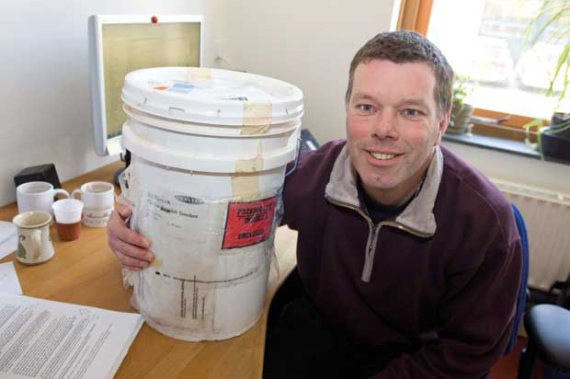Could you grow tomatoes on the moon? Or why not on Mars? There is no need to don your space suit to find out – Alterra ecologist Wieger Wamelink is figuring out the answer right here. Next Tuesday he will be starting an extraterrestial experiment in a Binnenveld greenhouse on the cultivation potential of sand from the moon and Mars. A crazy idea? Not at all, thinks Wamelink. ‘I just wanted to do something new, something nobody else had ever done. I’ve always been interested in space travel, while Alterra has a database that specifies a large number of abiotic preconditions for each species of plant. Now I’m combining these two things in this experiment.’ It is also the right time for something like this, now there are initiatives for sending people to Mars for the first time. But how do ordinary mortals get hold of moon and Mars sand? Apparently that is child’s play. Wamelink: ‘Just google it on the internet and you have it. I was surprised too. NASA made it. Of course they know the precise composition of the sand on the moon and Mars so you can simply replicate that. NASA has had a few tons of both made and the company Orbiter sells it for scientific experiments. There is a Japanese company, for instance, that is investigating whether you can make concrete from moon sand.’
Clover and lupins
The first vat containing 25 kilos of Mars sand was delivered to Alterra recently. Martian Regolith Simulant, it says on the tightly sealed white bucket. Is it really red? Wamelink does not know. ‘I’m keeping it closed for now. I don’t want any air getting in before the trial starts.’ A total of 50 kilos of moon and Mars sand has been ordered. At a cost of 2500 dollars plus 600 dollars for transport and 124 dollars in excise duty per vat. The plants Wamelink will try out include tomatoes, rye, lupins, clover and wolf’s bane. He will see whether they germinate and then grow. He has allowed about three months for his experiment. Enough for the first Mars tomato to see the light of day? ‘To be honest, probably not. I’m expecting only the nitrogen fixing plants, like clover and lupins, to do anything. Even if tomatoes can be grown, you still need to see whether they would be edible. There are a lot of heavy metals in these soils.’ Another point: Wamelink swears his experiment is not an April Fool’s joke. ‘I know it’s an obvious assumption to make. I can’t help the fact that it turned out this way. The convention is to play an April Fool’s joke on 1 April, which is why the press release emphasizes that the trial will start on 2 April.’

